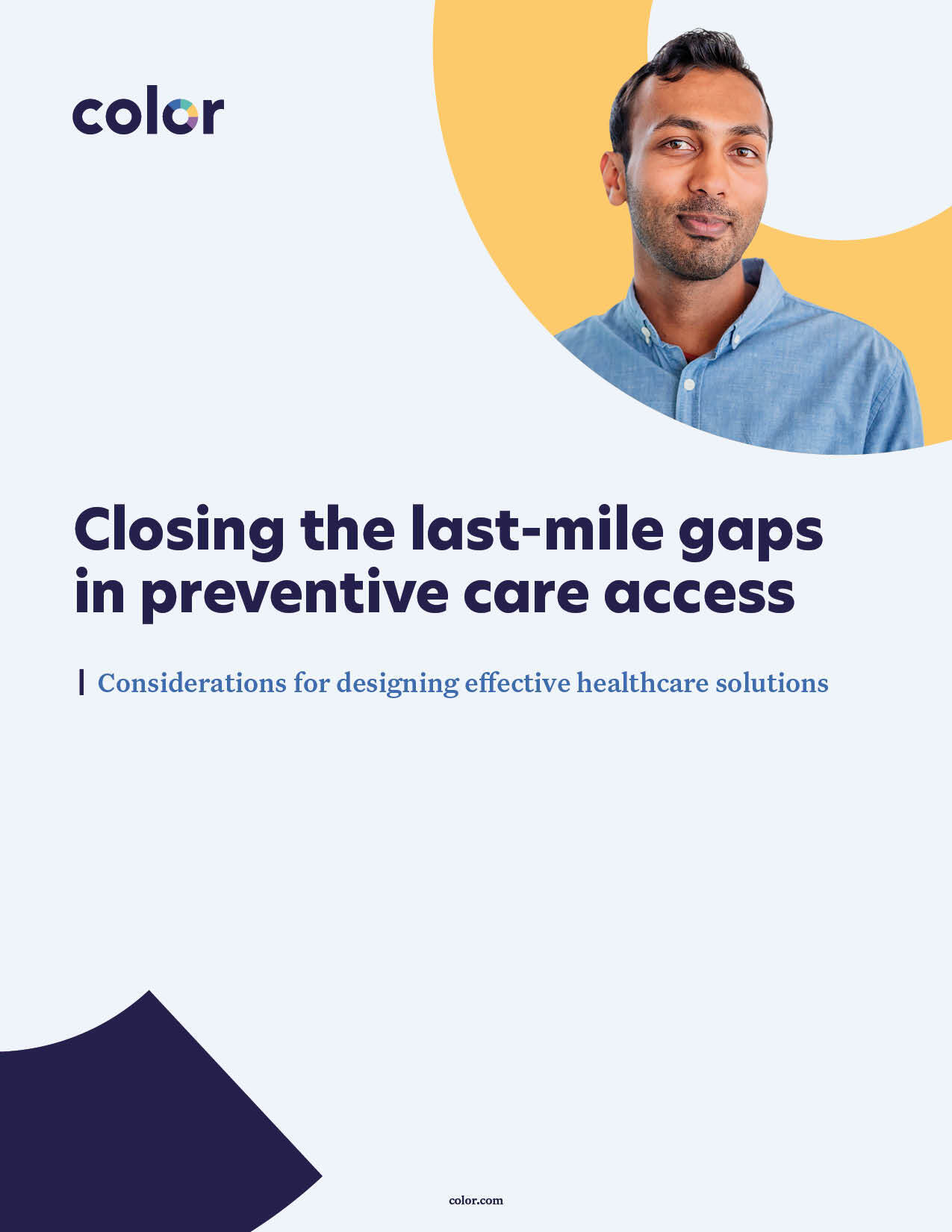News & Articles
Three Ways to Improve Preventive Care for Employees and Members
Color

By even the most conservative of calculations, the United States is leaving billions of dollars in health care savings on the table by not stopping diseases before they get expensive to treat. There’s a reason preventive care, such as routine screenings and tests, are often free or low-cost in standard insurance plans:
They work.
The return on investment for simple preventive measures is compelling. The highest ROIs are for low-cost interventions, like immunizations, substance use disorder screenings, and mental health assessments.
All of this should matter to employers and labor unions. Both are an integral part of the healthcare system in the United States. As of 2021, the Kaiser Family Foundation estimates that 49% of Americans get health insurance through their employer. Their latest research calculates that US employers with over 100 insured employees cover roughly 80% of employee health insurance costs, averaging around $10,000 per employee. Researchers at Deloitte US found that employers spend 80% of healthcare dollars on only 20% of their employees. The 20% are primarily those with advanced chronic diseases that become more expensive to treat over time. It’s in the best interest of employers, and organizations representing employees, to invest in preventive care programs that decrease the likelihood of disease progression.
When surveyed about employee healthcare costs, employers expressed extreme worry. A full 90% of employers believe costs will become unsustainable over the next 5-10 years. In the face of this impending shortfall, employers have scrambled to assemble health programs that incentivize wellness to mixed results. Many folks we speak with complain of “benefits bloat”–too many underutilized programs with little evidence of efficacy. Yoga and cooking classes, step trackers, and monetary incentives for health check-ups may seem adequate. But, digging deeper, researchers have found time and again that the healthiest employees gravitate towards these benefits rather than those who need support most.
Preventive care is obviously the key to ensuring healthy, productive employees and members. Yet, sadly, this country has a major preventive care uptake problem. Americans must catch up on every United States Preventive Task Force measure of success. In 2015, research indicated that only 8.5% of a representative survey of adults over 35 received all recommended, high-priority preventive care screenings. Three years later, the data was worse. In 2018, 6.2% of those surveyed received appropriate care. Even with a relatively modest Healthy People 2030 goal of 11.5% compliance, the United States has a long way to go.
You may have heard the phrase “last-mile problem” in conversations about telephone lines or bus stops. It’s about getting people or goods from a hub to the final destination. The last-mile problem of health care is similar. Our research identifies multiple reasons employees and members are skipping preventive care: lack of awareness, low trust in the system, and logistical barriers, to name just a few.
Employers and labor unions passionate about investing in a healthy workforce must focus on three main aspects of a solution for the last-mile problem:
Create true accessibility
To get more people into preventive care, we must be where they are. Evidence shows that access to telehealth visits increases demand for preventive services, but more is needed. Community-based care, offered where individuals live, work, and learn, is a crucial component of a holistic preventive care system.
Accessibility relies on clarity. A recent study estimates that 53% of annual healthcare spending is wasted due to employee confusion. Confusion is unnecessary friction. Bundling on-site preventive services also decreases confusion and increases uptake and follow-through, especially among the highest-risk populations. Coupling interventions – such as pairing vaccines with screenings for potentially serious conditions or screening for multiple conditions during a single patient visit – improves the likelihood of meeting preventive care guidelines. Last-mile solutions should implement hybrid approaches, combining the appropriate mix of digital and in-person services.
Increase uptake by improving acceptability
Last-mile solutions should focus on ensuring that preventive care is not only accessible but acceptable. For example, navigating the healthcare system in the US is challenging for those who are not proficient in English. In today’s increasingly globalized world, translation services play an important role in providing health care access to people who don’t speak the same language as their healthcare providers. Unfortunately, these services are often inadequate and can lead to a misunderstanding of vital medical information or, even worse, a misdiagnosis. This is especially true when it comes to the languages spoken by groups such as refugees or indigenous people, where the lack of language access can be a real barrier to health care. It is essential that employers and labor unions partner with companies that value a deeper level of accuracy so that all employees and members are comfortable with their care.
Uptake is also improved when individuals are guided through the care journey by experienced navigators and have access to information in their native language. Employers and labor unions seeking to improve the preventive care experience for their employees should deploy partnerships that include a care navigation component and complete interpretation services. Care navigation is especially critical for patients who often feel excluded from traditional care settings, such as low-income, limited English, or LGBTQ+ patients, as well as patients of color.
Ensure appropriate, consistent communication
Finally, last-mile solutions must include reliable communication of results and tested logistical infrastructure. Folks with a vested interest in designing solid benefits should pay special attention to how employees gain access to their test results and the ease of interpretation. Given the prevalence of mobile-only households, solutions must also be navigable on smartphones or on a platform that includes options for phone consultations. A robust last-mile solution must also include comprehensive follow-up planning, including access to counselors or other trained personnel who assist in correctly interpreting results.
There is so much more to understand about the complexities of the last-mile problems in the healthcare system. That’s why we created a full white paper on the issue. Click here to access our newest research: Closing the last-mile gaps in preventive care access.
We at Color believe it’s possible to bring extraordinary care to everyday places. We’re proud to work alongside our country’s employers, labor unions, and funds to design programs that get more people to the life-saving care they need. If you want to dig into our Essential Care product, specifically designed to increase accessibility, uptake, and follow-through, check out more information here. Or, feel free to drop us a line, and one of our experts will get in touch to set up a chat.




